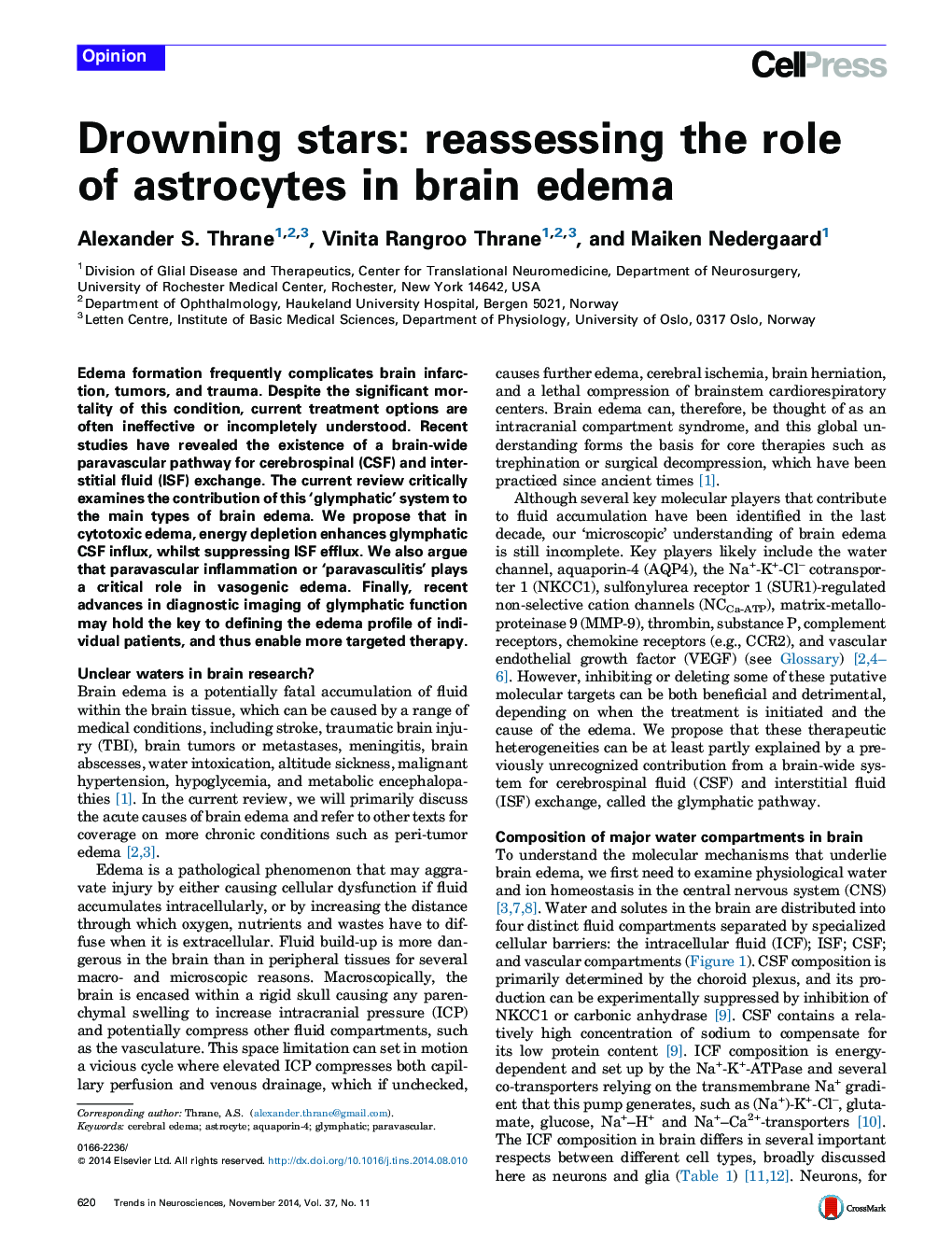| Article ID | Journal | Published Year | Pages | File Type |
|---|---|---|---|---|
| 4354254 | Trends in Neurosciences | 2014 | 9 Pages |
•Brain edema is a frequent complication of stroke, tumors or trauma.•Glymphatic fluid exchange likely contributes to salt and water accumulation.•Tissue injury might also trigger a paravasculitis, worsening the edema.•Further study could provide novel therapeutic and diagnostic tools.
Edema formation frequently complicates brain infarction, tumors, and trauma. Despite the significant mortality of this condition, current treatment options are often ineffective or incompletely understood. Recent studies have revealed the existence of a brain-wide paravascular pathway for cerebrospinal (CSF) and interstitial fluid (ISF) exchange. The current review critically examines the contribution of this ‘glymphatic’ system to the main types of brain edema. We propose that in cytotoxic edema, energy depletion enhances glymphatic CSF influx, whilst suppressing ISF efflux. We also argue that paravascular inflammation or ‘paravasculitis’ plays a critical role in vasogenic edema. Finally, recent advances in diagnostic imaging of glymphatic function may hold the key to defining the edema profile of individual patients, and thus enable more targeted therapy.
